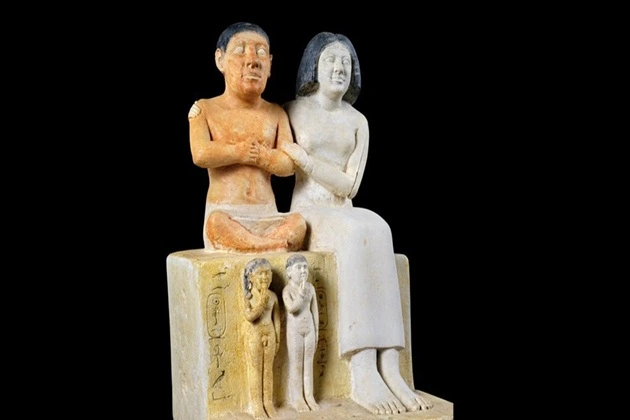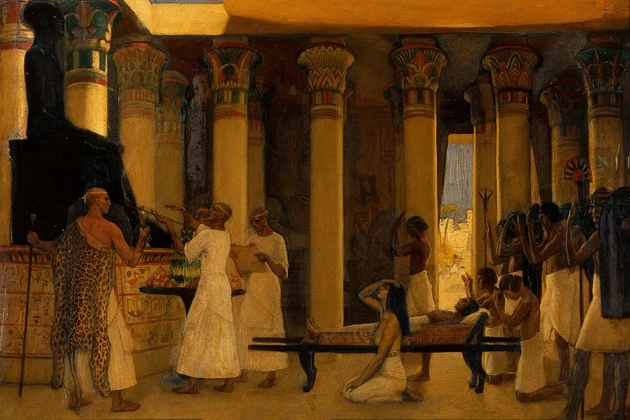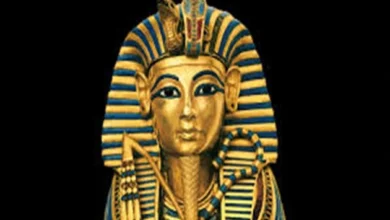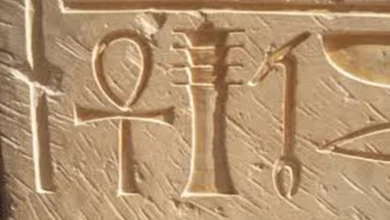Reason dwarfs were held in high esteem by the Egyptians, and how people were treated in Ancient Egypt

Health is a valuable asset that a person should have. Today, specialists, with the help of modern technologies, quickly and efficiently establish a diagnosis, prescribe treatment, and make recommendations. Has it always been like this? What did people living in the Ancient World do?
Ancient Egypt – the cradle of medicine

Four decades ago, in BC, Egyptian medical art conquered the world. In the royal courts of many states, the Egyptians were the leading magicians, healers, and dream interpreters. They could heal a lot, but they considered all their medical achievements to be a gift from the gods Thoth, Isis, and Imhotep.
Historians have long assumed that Imhotep was a household name for a doctor. A recently discovered tomb with a mummy confirmed the existence of a person who could skillfully heal. For his achievements in medicinal matters, Imhotep was proclaimed a god.
Imhotep described how a doctor should conduct an appointment. The first is an examination of saliva, urine, feces, and vomit, if any. The second is to determine the severity of the disease: I will treat it, I will fight it, I will not touch it. Imhotep pointed out the most incurable diseases: plague, smallpox, leprosy, and malaria.
Medical priests only prayed to the gods for the terminally ill, and for recovery, they required generous offerings to the sacred altars. In case of death, it was said that there were few offerings, so the god Anubis (Impu) took the soul to himself. Well, or the god Anubis tried to “harvest his harvest.”
Ancient Egyptian healers recommended eating honey, bovine liver, onion, garlic, radish, or aloe for internal diseases. They prescribed milk, beer, wine, and tinctures based on ginger, poppy seeds, mandrake root, and herbs as medicine. In some cases, treatment with mouse meat was used.
Egyptian healers treated open wounds and cuts with fragrant oils and applied a piece of raw meat “sealed” with the same oils. Large wounds were stitched with thread. A tight bandage of lint and linen cloth soaked in oils was applied to the fractures and coated with hardening resin.
Massage, aromatic spices, and—you won’t believe it—even applying a clay figurine of a sacred crocodile relieved the headache. Visit. A F R I N I K . C O M . For the full article. They embalmed all the deceased as they sincerely believed in the afterlife.
Naturally, processing the body of the deceased required a lot of knowledge. Therefore, the Egyptians mastered human anatomy faster than other countries. While performing funeral services, the “masters of the sacrament” paid attention to the condition of the deceased’s entrails.
Over time, they stated that the heart and intestines were the main internal organs. The concept of possible causes leading to death or explaining several diseases that the deceased suffered during his lifetime has emerged. Ancient papyri often stated the presence of parasites that worsened the quality of life.
Fourteen species of worms have been described, including the blood fluke (fluke) from the genus Schistosoma. The parasite causes intestinal upset, nausea, bleeding, liver and kidney failure, and the weakening of the infected person.
The doctors’ observations of the trematode’s effects on the body led to an awareness of the importance of hygiene and sterility. Under the threat of blood magic and curses from the deceased, any contact with the fluids of the deceased was prohibited.
Careful washing with soap was recommended for the living, relatives, and anyone who came into contact with the deceased. If they had wounds, all cuts and wounds were treated with mold peeled from the bark of a tree or bread.
The doctors prescribed laxatives, emetics, and an enema for intestinal parasites and several other diseases. Since unpleasant secretions from the human body detected helminth infection, ancient healers often used “bloodletting.”
The doctors hoped to improve health by expelling the “bad” blood. Plant diuretics and diaphoretic medicinal preparations were used for the same purpose, and water of different temperatures was used on the body.
The talking mummy is a source of knowledge about the past

For a long time, it was believed that the dead could not talk about themselves. Spectral analysis helped the mummies talk. A detailed study of Egyptian mummies by computed tomography allows us to establish the presence of atherosclerosis, arthritis, anemia, rheumatism, tuberculosis, and oncology in ancient Egyptians.
So, Pharaoh Merneptah found excess calcium in the walls of the vessel. The translation of the text of the tombstone, which describes the symptoms of his diseases, also confirms that arteriosclerosis provoked his angina pectoris and heart attack and led to his death.
The papyri revealed his physician’s recommendations: lead a healthy lifestyle and avoid overeating. Get up early, do gymnastics, pour cool water, and rub well with a cloth. Avoid overheating and hypothermia, and eliminate the habit of thinking about the bad.
These tips from Ancient Egypt are relevant even now for a similar disease. Egyptian doctors advised patients complaining of weakness, shortness of breath, and chest and left arm pain to rest more, eat plant foods, and drink “light” broth from birds.
The prescriptions included collecting medicinal herbs and wrapping them with cloth soaked in essential oils. A Koch wand was discovered in Menkheperre, who lived in the eleventh century BC. Considering the severe spinal deformity in the priest of the god Amun, spinal tuberculosis can be confidently diagnosed. Of course, no one knew such a diagnosis then, but the treatment was unequivocal: honey, moss boiled in milk, tar, crushed minerals, and animal fats.
DNA analysis of the mummy of Pharaoh Tutankhamun revealed malaria infection, cleft palate, and clubfoot, a disease in which the vertebrae in the neck are “soldered” and the limbs weaken. A collection of canes found in the tomb of the young ruler of Egypt, with traces of active use, confirms the fact of his serious illness.
Tutankhamun was given a massage with oils and herbal tinctures. The pain was relieved with red wine and opium. They tried to cure malaria with garlic, beer, hot milk with honey, and water at different temperatures.
The papyri found with the mummy of Nespamedu, the pharaoh’s oculist, contain prescriptions for treating eye ailments. For blindness, the patient was prescribed dried bovine liver. Cosmetic eyeliner and eye shadow containing antimony salts, lead, and malachite powder are used for all types of infections. A detailed study of the teeth of the mummies of Ancient Egypt allows us to state that they frequently visited dental specialists. Some mummies have dental fillings and dentures made of ivory or platinum gold.
The particles of palm oil mixed with the substance on the throne (a combination of baking soda and salt) found on the teeth prove the oral cavity’s daily hygiene. They tried to stop the toothache by rinsing with herbs, applying honey to the gums, and even exorcising demons.
Traces of a malignant tumor have been found in the mummies of the pharaoh Hatshepsut and the ancient Egyptian priest Hor-Djehuti. Pieces of raw meat, clay, medicinal mud, donkey’s milk, and bovine bile were applied to the sore spot.
Is the dwarf a magician or just an invalid?

In ancient Egypt, all unexplained phenomena were attributed to the gods’ will or a magical manifestation of nature. Therefore, dwarfs were considered magical entities that brought good luck and scared away evil spirits, protecting them from venomous reptiles (snakes and scorpions).
The Pharaohs kept “bearers of magical power” with them, and the Egyptians loved and respected dwarfs. Disproportionately developed, small-stature favorites married women of normal build. They had normal children.
Dwarfs served in various places: as servants of nobles, actors, overseers of workers, etc. Most of all, they were jewelers and fortune tellers. Their deeds have been preserved on papyri, mummies, and sculptures.
Moreover, dwarfs’ burials were almost always located next to the sarcophagus of the pharaohs. This indicates that the rulers considered them their closest assistants. For example, Seneb was the high priest of the funeral cults of Khufu.




